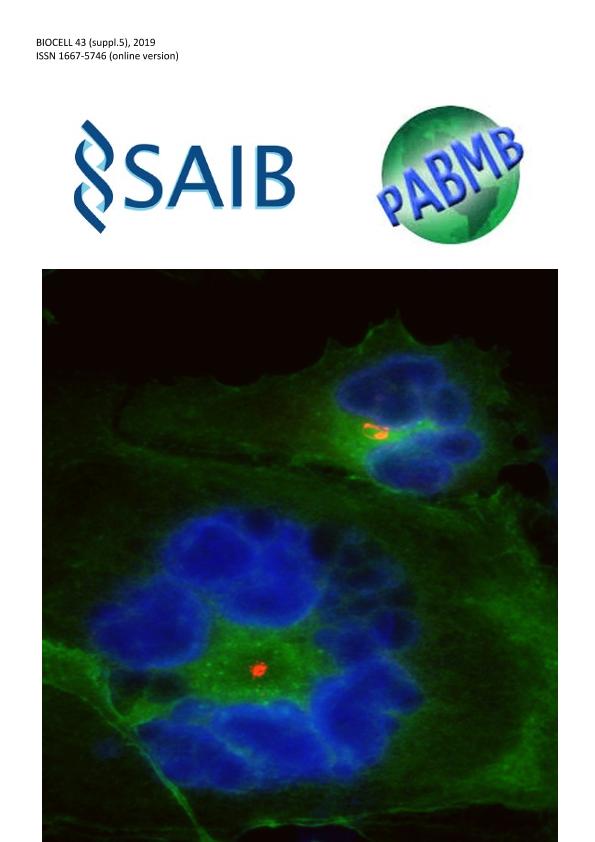Evento
Sustainable production of actinobacteria for use in bioremediation
Costa Gutierrez, Stefanie Bernardette ; Aparicio, Juan Daniel
; Aparicio, Juan Daniel ; Sineli, Pedro Eugenio
; Sineli, Pedro Eugenio ; Benimeli, Claudia Susana
; Benimeli, Claudia Susana ; Polti, Marta Alejandra
; Polti, Marta Alejandra
 ; Aparicio, Juan Daniel
; Aparicio, Juan Daniel ; Sineli, Pedro Eugenio
; Sineli, Pedro Eugenio ; Benimeli, Claudia Susana
; Benimeli, Claudia Susana ; Polti, Marta Alejandra
; Polti, Marta Alejandra
Tipo del evento:
Reunión
Nombre del evento:
LV Annual SAIB Meeting and XIV PABMB Congress
Fecha del evento:
04/11/2019
Institución Organizadora:
Sociedad Argentina de Investigación Bioquímica y Bilogía Molecular;
Título de la revista:
Biocell
Editorial:
Tech Science Press
ISSN:
1667-5746
Idioma:
Inglés
Clasificación temática:
Resumen
Pollution by pesticides and heavy metals is an environmental problem which strongly concerns the scientific community in the last decades. Although greats progress in this area were achieved, nowadays there are relatively few successful treatments for restoration of polluted environments. One promising solution is bioremediation by bacteria, especially by actinobacteria, because they are ubiquitous and have a wide spectrum of activities. It is estimated that 40 Kg of microbial biomass are required to decontaminate one hectare of soil in situ. Therefore it is necessary to develop a sustainable process that allows the generation of a large amount of biomass using low-cost substrates. Biofuels, such as biodiesel and bioethanol, are renewable and environmentally friendly alternative to fossil fuels. Biodiesel is produced by the transesterification of vegetable oils, animal fats or microbial oils with alcohol, being glycerol the main product, which represents 10% of its weight. Although glycerol is used for different applications, the increasing production of biodiesel in the world causes an excess of this material. Hence, glycerol can be used as a substrate to obtain products with high added value.In the present work, four actinobacteria with known bioremediation activity (Streptomyces sp. M7, Streptomyces sp. MC1, Streptomyces sp. A5 and Amycolatopsis tucumanensis AB0) were evaluated for the production of biomass at laboratory scale, using glycerol as a source of carbon and energy in liquid minimal medium (30 ml). Biomass production was measured by dry weight and residual glycerol concentration was determined using a commercial kit. Streptomyces sp. A5 was able to produce the greatest amount of biomass and it was selected to evaluate the influence of culture parameters through a two-level fractional factorial design which allowed studying the main effects of the involved factors. From this design, the variables with the greatest effect on the response (biomass g/L) were selected. The factors evaluated were: inoculum concentration, glycerol concentration, agitation, temperature and pH. Subsequently, in order to optimize the biomass production of the actinobacteria, a complete factorial design was carried out by selecting the most important factors previously determined. The simple effects and cross effects were studied, and a response surface design was applied to adjust the model and optimize the microbial biomass production. All factorial designs were made and analyzed using the statistical software Minitab® 17.2.1.Finally, the selected conditions will be used for biomass production of Streptomyces sp. A5 in a greater scale instrumented bioreactor of 2 L capacity.
Palabras clave:
SUSTAINABLE
,
ACTINOBACTERIA
,
BIOREMEDIATION
Archivos asociados
Licencia
Identificadores
Colecciones
Eventos(INSIBIO)
Eventos de INST.SUP.DE INVEST.BIOLOGICAS
Eventos de INST.SUP.DE INVEST.BIOLOGICAS
Eventos(PROIMI)
Eventos de PLANTA PILOTO DE PROC.IND.MICROBIOLOGICOS (I)
Eventos de PLANTA PILOTO DE PROC.IND.MICROBIOLOGICOS (I)
Citación
Sustainable production of actinobacteria for use in bioremediation; LV Annual SAIB Meeting and XIV PABMB Congress; Salta; Argentina; 2019; 1-4
Compartir



